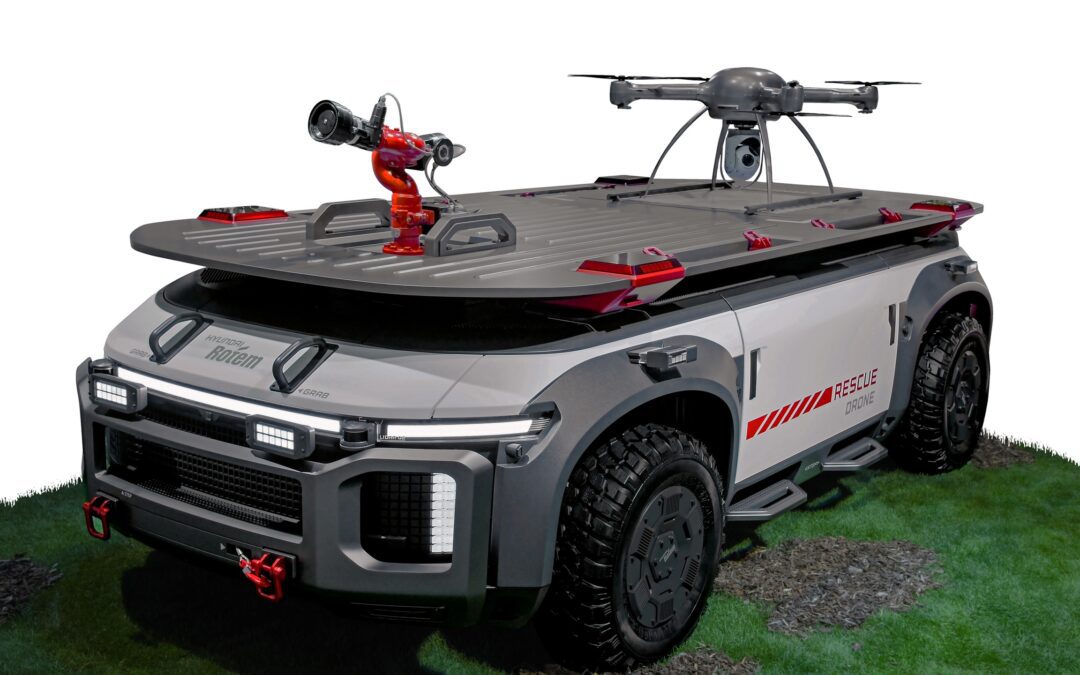“…Hyundai is working on the next generation of drones—both aerial and ground-based—and is developing hydrogen fuel cells to power them.
Hydrogen is appealing because it can significantly reduce Hyundai’s carbon footprint, helping it tackle its goal of becoming carbon neutral by 2045.
Unlike diesel fuel, which emits CO2, hydrogen power will emit “only water as a byproduct” during operations, according to promotional materials released by the company.
Hyundai’s next-gen drones will use a “Fuel Cell e-Bogie,” which is a fully-enclosed system that can be attached to various types of ground-based vehicles.
The e-Bogie is really more like a smart robot than a traditional car. The fuel cell e-Bogie is a platform that offers limitless business applications.
– Sangyup Lee, Senior V.P. of Hyundai and Global Genesis Design
The e-Bogie system is powered by hydrogen fuel cells and gives vehicles independent four-wheel steering, allowing large shipping trucks to maneuver much more nimbly than traditional ones.
The term Bogie comes from the railroad industry, and refers to the wheel subframes that sit under each train car.
With two e-Bogies carrying a single container (as shown above), the movement of the truck isn’t constrained by its size, but can articulate from underneath.
The same concept applies to trains.
An entire train system can articulate along a curving track because it’s made up of several independent cars, allowing for greater flexibility of movement. Compare this to a large truck, which is a single unit that sits on a single platform, and you can imagine how the e-Bogie design will help dramatically improve maneuverability.
